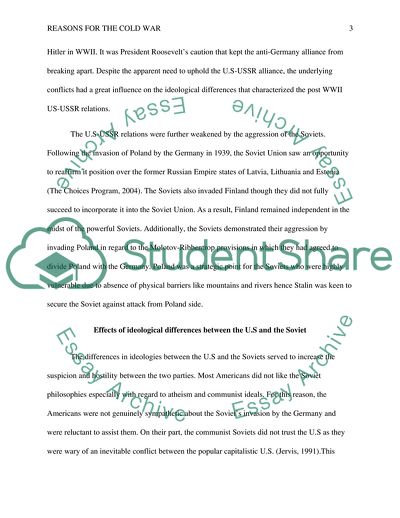The Reasons for the Cold War after World War II Article Example | Topics and Well Written Essays - 1500 words. https://studentshare.org/politics/1773138-the-reasons-for-the-cold-war-after-world-war-2
The Reasons for the Cold War After World War II Article Example | Topics and Well Written Essays - 1500 Words. https://studentshare.org/politics/1773138-the-reasons-for-the-cold-war-after-world-war-2.


